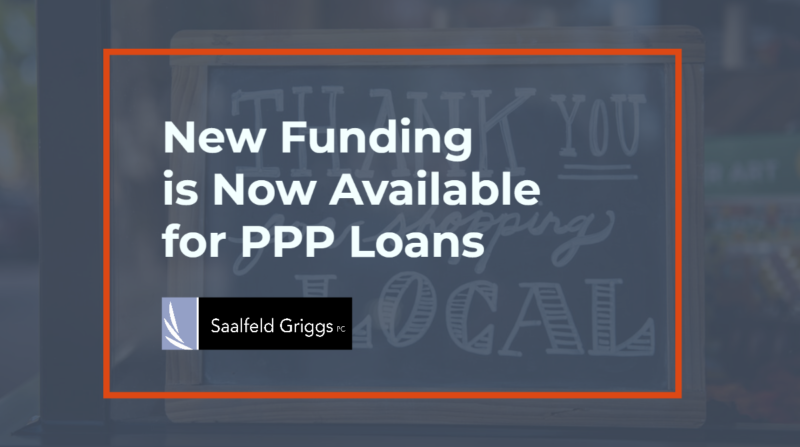By Caleb Williams, Attorney in the Business & Taxation Law Practice Group
Congress has approved additional funding for the Paycheck Protection loan program for small businesses. The action allocates an additional $310 billion to the program. The CARES Act, which created the loan program, allocated an initial $349 billion to fund PPP loans. That funding ran out in less than two weeks. Small businesses should not delay applying for a PPP loan, as the new funding will not last long.
This new legislation does not change any of the loan terms or the forgiveness feature included in the original CARES Act. It does, however, designate specific PPP funding to credit unions and community banks. If you bank with a credit union or community bank, you may have a better opportunity to obtain a PPP loan through that financial institution rather than a national bank.
One area of uncertainty for borrowers is how much of the loan will be forgiven. The US Treasury and SBA have not yet issued detailed guidance on the forgiveness feature of a PPP loan. In general, the portion of the loan used on payroll during the 8 weeks following loan funding, along with a portion of eligible costs (utilities, rent, mortgage interest) during that same 8-week period, will be forgiven. However, the amount eligible to be forgiven is reduced in the following circumstances:
– If you spend less than 75% of the loan on payroll costs as the amount forgiven can only include up to 25% of other eligible costs
– You have reduced the number of your full-time employees compared to employee count before February 15, 2020
– You reduce employee salary or wages of employees making less than $100,000 per year by more than 25% of base salary or wages of such employee during the prior quarter
It will be necessary to provide your lender with evidence that the loan proceeds were used to pay eligible expenses when seeking forgiveness. Once you receive the loan, keep PPP loan proceeds in a separate bank account to avoid co-mingling with other funds. This will help you track exactly how funds are used.
Other measures you should consider taking to maximize the amount of the loan forgiven include:
– Make sure your payroll provider draws from your PPP loan account. If you are supplementing payroll costs from a separate account, work with your payroll provider to maintain accurate records.
– Maintain records of cost invoices and matching payments from the PPP account for all eligible expenses.
– Consider the net financial impact of significant compensation reductions before implementing those reductions as reducing compensation by more than 25% will reduce the amount to be forgiven.
– Continue to monitor the SBA’s website for updates on how forgiveness will be calculated and seek the input of legal and financial advisors as you make decisions on the use of loan proceeds and repayment.
Caleb Williams is a partner in the Business & Taxation Law practice group and a member of the Agri-Business and Wine & Vine industry teams. The information in this article is not intended to provide legal advice. For professional consultation, please contact Caleb at cwilliams@sglaw.com at Saalfeld Griggs PC. 503.399.1070. © 2020 Saalfeld Griggs PC


